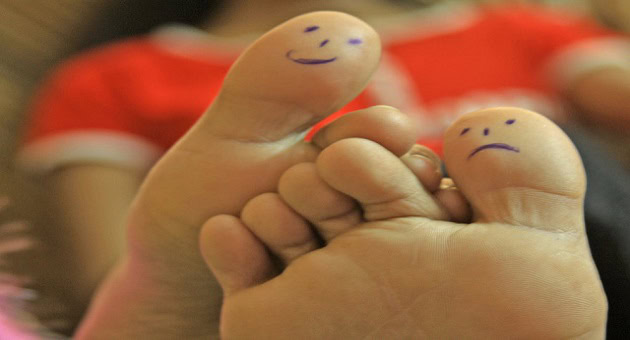
Do you know that about 2.5% of the total diabetics are effected with foot ulcers and related diseases. Not only this, progression of ulcers/foot wounds leaves the patient with the only option of amputation. Surveys suggest that only two third of the diabetic foot ulcers eventually heel without amputations. Doctors advise diabetic patients to adopt a preventive and effective approach to help prevent these complications.
What Foot Complications Can Occur In Diabetics?
Diabetes (both type 1 and II) causes damage to blood vessels and peripheral nerves that can result in problems in the legs and feet. Two main conditions associated with diabetes are peripheral artery disease (PAD) and peripheral neuropathy leading to increased risk of foot problems.
Peripheral Artery Disease (PAD) means narrowing and hardening of blood vessels. It causes pain in the calf muscles while walking and sometimes even ulcers due to lack of oxygen supply to these tissues.
Peripheral Neuropathy refers to damage to the small nerves in feet due to diabetes. Symptoms include decreased sensation in the nerves of the legs and feet, making it difficult to perceive injuries due to lack of feeling.It also causes tingling, pain, or burning in the involved areas.
In addition to these, Diabetic patients may experience varied foot problems like overgrowth in the form of corns, calluses, ulcers, painful events such as bunions and fungal infections.
What Precautions Should A Diabetic Patient Take?
It is essential for a diabetic patient to take care of his/her feet and take necessary precautions. Some important footcare tips include
1 . Be watchful. Inspect your feet daily before you start your day. Look for cuts, cracks, lesions, blisters, calluses on your feet.
2 . Wash and wipe your feet daily with lukewarm water thereby reducing the chances of infections. Make sure you dry and pat the areas within the toes.
3 . While pampering your body with oils/ lotions; do not dampen your feet and invite infections. Apply the lotion only after you have dried your feet.
4 . Nails should be carefully trimmed; Cut your nails straight across the length and not from the corners.
5 . During work hours try to sit upright; change postures to avoid being in one position for long; Helps in regulating sugar levels.
6 . During long hours travel, move your feet at regular intervals to ensure a steady blood supply to feet.
7 . Pick a decent pair of shoes that fits well and protects you from tripping and bruising. Breathing for your feet is as important as is for you.
8 . Orthotic footwear can be a good pick for those facing severity. avoid plastic or vinyl based shoes.
9 . You can also keep a foot dairy or prepare a calendar with dates earmarked for your footcare regimen.
When Should A Doctor Be Consulted?
– Check for numbness/ paleness in your feet, an indication for faulty nerve conduction. Pink and red feet may not always be an indicator of healthy feet; instead are indicative of excessive blood flow deprived of sugars. If it repeats see a doctor.
-Check for unwanted growth; these generally build up on areas of persistent pressure. Do not incise them by yourself. Instead consult a doctor.
-Area under the toe, has several layers of skin and takes most of your body weight. Therefore, can be another site of callus formation.
-In severe cases, when a wound has taken more than two days to heal, immediately reach to a podiatrist/doctor. Delays can lead to deterioration of the wound site.
People are also Reading:
6 Exercise Tips Diabetics Should Follow
How To Choose A Glucometer That Is Right For You
So, take out some time every day and inspect your feet carefully. Remember it is these healthy feet are going to take you places! Stay Healthy, Stay Happy!